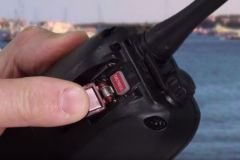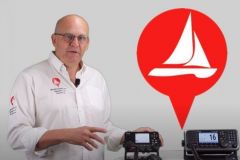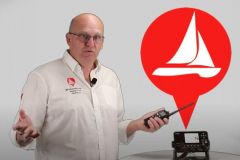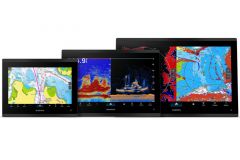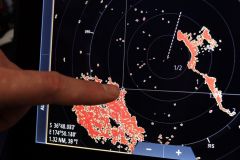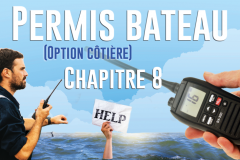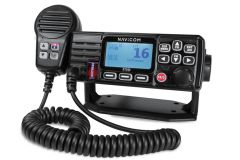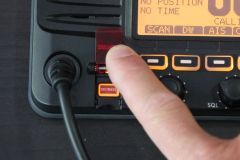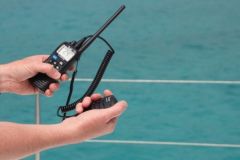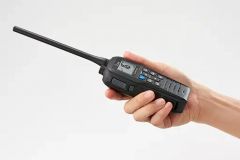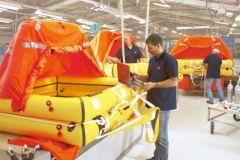Getting Started
A VHF is often turned on by turning the volume knob.
Some models have an On/Off button to be pressed (sometimes several seconds)
Channel
You can choose the channel you want to communicate on by turning a knob (or using arrows). Channel 16 is the security channel. It is watched over by all those practising at sea: SNSM, semaphore, merchant ship... It is directly accessible via a dedicated key (often red).
Channel 16 should not be used for long. As soon as we get his contact, we have to switch to another channel. The channels for boat exchanges are 06, 08, 72 and 77. The 09 is used to contact the marina captain's offices and the 10 for semaphores.
Squelch
This is a reception setting wheel (or arrows). For the best possible reception quality, the Squelch should be set to minimum. But too low, you can hear parasites. To adjust the Squelch, turn it down until you hear "pschhhhh" and then turn it up just a little.
PTT
A VHF does not work in duplex. That is to say, you can't talk and listen at the same time. Therefore, before transmitting on VHF, it is necessary to listen that no one is using the channel.
Then we talk by pressing the PTT button. Nothing to do with the Post Office, PTT stands for Push To Talk. Once you have finished speaking, release the pedal (otherwise you occupy the channel and no one can transmit).
Example
If I want to contact a friendly boat, I put myself on 16 and transmit by pressing PTT :
- Icom, Icom, Icom, this is the sailboat Toulouse, Toulouse, hello, clear 6?
- Toulouse, this is Icom, OK to clear 6
We position ourselves on channel 6, we listen to make sure it's free before starting an interesting discussion.
- Icom, this is Toulouse, we'll meet at the anchorage for drinks?
Transmitting power
VHF radios all have 2 transmit powers. The maximum power (25 W for fixed VHF and 5 or 6 W for mobile phones) and the low power: 1 W for everyone. Avoid using the maximum power because you "pollute" the frequency by increasing the range. That's why you should start by transmitting in 1 W and if you don't get an answer, try again with the maximum power.

 /
/ 




